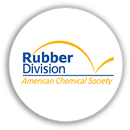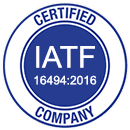ASTM D1349: Standard Practice for Rubber – Standard Temperatures for Testing
ASTM D1349 is a standard practice established by ASTM International that defines the standard temperatures used for testing rubber materials. Since rubber properties vary with temperature, this standard ensures consistency in mechanical, physical, and chemical testing across different laboratories and industries.
By following ASTM D1349, manufacturers and researchers can obtain accurate, repeatable, and comparable test results for rubber and elastomeric materials, ensuring compliance with industry specifications.
Purpose and Importance of ASTM D1349
The ASTM D1349 standard is designed to:
- Standardize Testing Conditions by establishing precise temperature ranges for rubber property evaluation.
- Ensure Consistency in Results by reducing variability caused by temperature fluctuations.
- Improve Product Quality by helping manufacturers develop rubber materials suited for specific operating environments.
- Support Regulatory Compliance by ensuring rubber testing aligns with global industry standards.
Standard Testing Temperatures in ASTM D1349
ASTM D1349 defines specific standard temperatures for rubber testing, ensuring accurate comparisons across different materials and laboratories. The most commonly used temperatures include:
- Normal Testing Conditions: 23°C (±2°C), typically used for general rubber testing.
- Low-Temperature Testing: 5°C, -12°C, -25°C, and -40°C (±1°C), used to assess rubber flexibility and brittleness in cold environments.
- High-Temperature Testing: 70°C, 100°C, 125°C, and 150°C (±2°C), applied to evaluate heat resistance, aging properties, and thermal stability.
These standard conditions apply to multiple rubber tests, including tensile strength, elongation, hardness, compression set, and heat aging evaluations.
Key Applications of ASTM D1349
ASTM D1349 plays a critical role in industries where rubber properties must be tested under standardized conditions. Some key applications include:
- Automotive Industry: Ensuring rubber seals, gaskets, and tires perform reliably in extreme temperature conditions.
- Aerospace and Aviation: Evaluating rubber components used in aircraft exposed to varying altitudes and climates.
- Industrial Manufacturing: Testing rubber belts, hoses, and vibration dampeners for temperature resilience.
- Consumer Goods: Ensuring rubber footwear, gloves, and appliances maintain performance at different temperatures.
- Medical Devices: Verifying the reliability of rubber components in healthcare equipment, such as tubing and seals.
Benefits of ASTM D1349 Compliance
- Reduces Testing Variability by ensuring laboratories worldwide obtain consistent and repeatable rubber test results.
- Improves Product Development by helping manufacturers design rubber compounds optimized for specific temperature conditions.
- Enhances Safety and Performance by ensuring rubber materials maintain structural integrity under operating temperatures.
- Facilitates Regulatory Approval by helping companies meet ISO, ASTM, and other international rubber standards.
Challenges in ASTM D1349 Testing
- Environmental Control: Maintaining precise temperature conditions requires specialized test chambers.
- Material Sensitivity: Different rubber compounds may react differently to temperature changes, affecting test results.
- Testing Costs: Ensuring temperature stability in test environments can add to laboratory expenses.
Industries Benefiting from ASTM D1349
Several industries rely on ASTM D1349 to ensure the quality and performance of rubber components:
- Automotive & Transportation: Ensuring rubber tires, hoses, and seals withstand temperature variations.
- Aerospace & Defense: Helping in designing heat-resistant rubber components for extreme environments.
- Industrial Equipment: Ensuring high-temperature durability of conveyor belts, gaskets, and dampeners.
- Medical & Healthcare: Supporting temperature-sensitive rubber applications in medical devices and laboratory equipment.








